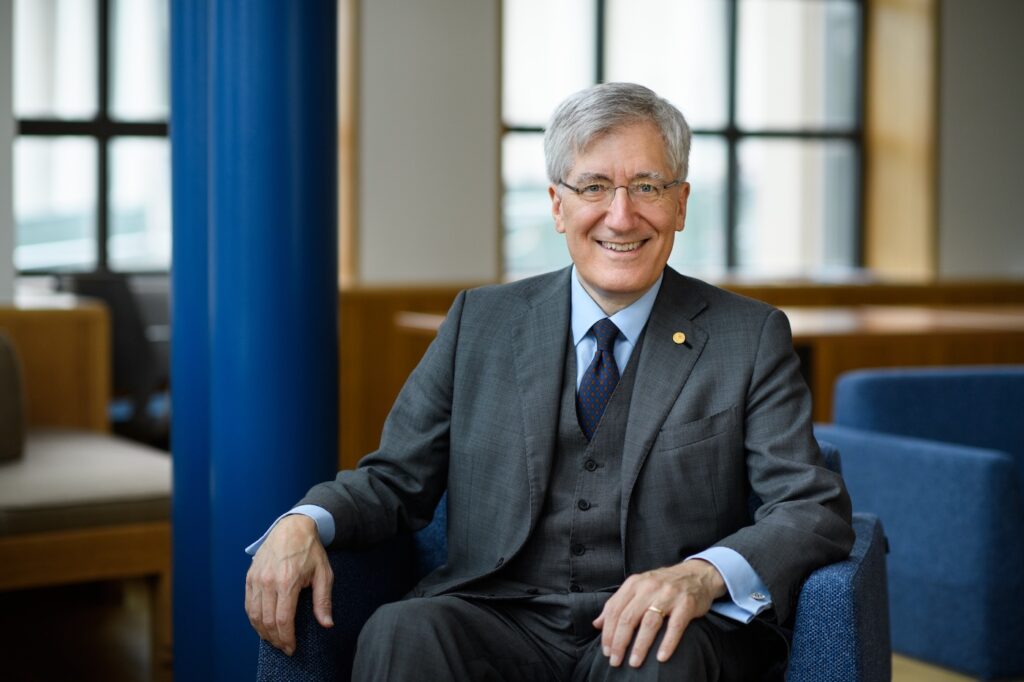Recently, Politico published a sprawling article by Heidi Przybyla ostensibly about the role of amicus curiae (“friend of the court”) briefs in constitutional litigation, but really about the power and influence of Leonard Leo—and about the role I played in litigation resulting in the Supreme Court’s overruling of Roe v. Wade. Ms. Przybyla’s piece, entitled “’Plain Historical Falsehoods’: How Amicus Briefs Bolstered Supreme Court Conservatives,” purports to be objective reporting, but the political standpoint from which it is written, and the political agenda it seeks to advance, could not be clearer. Please read it for yourself.
I am quoted extensively in Ms. Przybyla’s piece based on responses I made to inquiries she directed to me by email. So that readers can assess for themselves the fairness and integrity of Ms. Przybyla’s reporting, I will here post, in its entirety, the communications between us.
Since our exchanges speak for themselves, I will not comment other than to highlight my repeatedly and emphatically urging her in the messages that you are about to review to read for herself the work of legal historians John Keown and Joseph Dellapenna, whose fully and carefully documented writings on the history of abortion regulation establish beyond a shadow of a doubt that abortion after quickening, except for the sake of preserving maternal life, was criminally punishable, and indeed punished, at common law in England and the United States prior to the more comprehensive prohibitions on abortion by state statutes in the mid-nineteenth century—and that deliberately inducing miscarriage even prior to quickening was considered an unlawful act, even though not criminally punishable. (So, for example, facilities at which abortions were performed could be, and were, shut down by law enforcement officials, and pre-quickening abortions resulting unintentionally in maternal death were prosecuted as murder, rather than, say, manslaughter, which would not have been possible but for the underlying unlawfulness of performing an abortion.)
I should note that yesterday, Ramesh Ponnuru posted a critique of Pryzbyla’s article, describing it as a “preposterous attempt to discredit conservative amicus briefs.” He writes that
Start your day with Public Discourse
Sign up and get our daily essays sent straight to your inbox.Finnis and George are right, and it requires no specialized historical training or credentials to see it. Przybyla cites a statement by two historical associations that — if you read it closely — doesn’t actually deny what Finnis and George said. It does not attempt to dispute that the common law ever treated abortion as a crime; it does not back up Blackmun’s assertion that it was “doubtful” that it did so even late in pregnancy. She also cites three medievalists who argue that Bracton referred to abortion as homicide only when the fetus is “formed and animated.” There’s an interesting story to be told about what he meant by that, but it doesn’t matter here: Alito explicitly noted Bracton’s “formed and animated” qualification. Nobody is disputing it. The medievalists are just firing up a smoke machine.
Here is our exchange.
Since our exchanges speak for themselves, I will not comment other than to highlight my repeatedly and emphatically urging her in the messages that you are about to review to read for herself the work of legal historians John Keown and Joseph Dellapenna.
From: Heidi Przybyla
Sent: Thursday, November 2, 2023 8:36 AM
To: Robert P. George
Subject: POLITICO story?
Hello Prof. George:
I am working on a piece about the volume of amicus briefs that have come before the court that are tied to Leonard Leo’s network of groups and his close associations.
I looked at seven of the most recent cases since the new supermajority was seated and found that Leo’s network of groups and close connections is behind 70% of the briefs that were filed in these cases.
I’m reaching out to you because one of the examples we are using is the assertion, including in Alito’s majority opinion, that abortion was a crime in English common law cases dating to the 13th century. This is, of course, a component of your brief, also quoting Henry de Bracton.
Since we feature this prominently in the story I want to be sure to reach out. Specifically, I am hoping you could respond to this rebuttal from the American Historical Association and Organization of American Historians who dispute this?
“The difficulty with the claim that ‘abortion was a crime’ in the thirteenth century is that in the thirteenth century, and well beyond, neither the term “abortion” nor “crime” meant what Alito wants them to mean.”
We are likely publishing the story early next week
Will you please me know, either way, if you would like to weigh in?
Regards,
Heidi
Heidi Przybyla
National Investigative Correspondent
POLITICO
++++++
From: Robert P. George
Date: Monday, November 6, 2023 at 9:12 AM
To: Heidi Przybyla
Subject: RE: POLITICO story?
Hello Ms. Przybyla:
I’m sorry for the tardiness of this reply. I was away at the end of last week and have come back to a crush of obligations.
Thank you for giving me an opportunity to comment on the July 2022 Joint Statement of the American Historical Association and the Organization of American Historians and the June 2022 article of Three Medievalists.
In my judgment, these efforts misrepresent the history of the secular criminal law about abortion from the mid-13th century to the mid-19th century. They are far from the first misrepresentations. In the 1989 Webster case, there was an amicus curiae brief signed by 281 historians claiming demonstrably falsely that abortion was not unlawful and never a crime at common law. Then there was a similar amicus brief in the 1992 Casey case, signed by 250 historians, and then the 2021 “Historians” amicus brief in Dobbs signed by no historians (just counsel). The first two briefs were comprehensively refuted by Professor John Keown, the leading English scholar (now teaching in the United States) on the subject, and by Professor Joseph Dellapenna, an American scholar whose comprehensive historical study of abortion regulation is the most extensive work in the area known to me. I urge you in the strongest possible terms to read for yourself Professor Keown’s and Professor Dellapenna’s demolitions of those briefs. Do not rely on my word. Do not rely on the word of the brief writers. Please read for yourself and decide whether I am correct to say, as I will say again, that the briefs were comprehensively refuted—indeed, they were exposed as gross deceptions.
The 2021 anonymous Historians’ brief tacitly acknowledges the dishonesty and incompetence of the earlier briefs by silently—though it is a silence that speaks volumes—withdrawing their central claims that there was at common law a “right” or “liberty” or “freedom” of abortion, replacing that with a claim (ambiguous and still highly misleading) about what a pregnant woman “could” do “at her discretion.”
Justice Alito for the Court in Dobbs demonstrates that at common law abortion at any stage of pregnancy was unlawful (so that, for example, anyone trying, however competently, to induce miscarriage at any stage of pregnancy was guilty of murder if the woman died—something of which that individual would not be guilty had the performance of the abortion been lawful), and that from “quickening” abortion itself was a criminal offense intermediate between felony and misdemeanor unless done to save the pregnant woman from dying. Alito neither accepted nor rejected the thesis of the amicus brief Professor John Finnis of Oxford University and I submitted (and for which we supplied a massive amount of evidence), namely, that between roughly 1250 and 1750 “quick” and “quicken” in this context meant “animated” and that during those centuries educated common opinion was that the unborn child was “formed” about 21 days after conception and “animated” about 40 days after conception. Alito cited (n. 24) pp. 12 to 14 of the brief, and particularly note 32 in which we quote the powerful evidence of Chambers Cyclopaedia (1728) on “embryo” and the accepted “common opinion” that animation is at 40 days.
In the 100-page expanded version of our brief, “Equal Protection and the Unborn Child: A Dobbs Brief” Harvard Journal of Law & Public Policy 45 (2022) 930-1031, we demonstrate by quoting extensively from the standard encyclopedia of Bracton’s era, Bartholomaeus Anglicus, De Proprietatibus Rerum [On the Properties of Things], that when Bracton said—in the passage from which the Three Medievalists quote a carefully isolated phrase—that abortion by blow or potion is criminal homicide if the fetus is “formed” or “animated” (“particularly if it is animated”), he meant by “formed” a fetus more than 21 days from conception, and by “animated” a fetus more than 40 or 42 days from conception.
Our expanded brief on pp. 1022-1025 shows the unscholarly character of the Historians’ Brief in Dobbs and pp. 1016-1022 refutes the related arguments in the Brief for the United States.
These historians lamentably conceal what is in the public record (the Dobbs opinion and our Dobbs brief), and as usual fail to engage at all with the compelling evidence that abortion was unlawful (as we explain in detail) even before quickening and subject to criminal sanction after quickening; and that for these common law purposes “quick[ened]” meant any time after 42 days from conception.
Sincerely,
Robert George
+++++++++
From: Heidi Przybyla
Sent: Wednesday, November 15, 2023 10:50 AM
To: Robert P. George
Subject: Re: POLITICO story?
Hello Prof. George:
Many thanks for your responsive email.
I appreciate it very much and have incorporated it into the story, which uses your Dobbs brief as a peg for a broader discussion on the influence of conservative amicus briefs over the court.
Alito also quotes from de Bracton, including one of the same quotes you reference, in his opinion on Dobbs.
I appreciate your response very much and want to be transparent about the story since the historians, of course, also push back. One thing they note, which the editors wanted to make clear, is that you are a jurisprudence expert and not a historian.
I’m not belaboring a debate here, just sharing for transparency. Your comments and sourcing are also included high up in the story.
Again, many thanks,
Heidi
Heidi Przybyla
National Investigative Correspondent
POLITICO
++++++++++
From: Robert P. George
Sent: Wednesday, November 15, 2023 11:04 AM
To: Heidi Przybyla
Subject: RE: POLITICO story?
Thank you, Heidi.
I find it amusing that they try to immunize themselves from critique by claiming guild authority—they are historians, while Professor Finnis and I are not. The trouble for them is that Professor Finnis and I, though we are not historians, can read English. The sources are available to us, just as they are to them. So we can see what the sources say, and compare it with what they claim the sources say. We can also notice and report what they avoid revealing about what the sources say.
Again, thank you for inviting my comments.
Best wishes,
Robert George
+++++++++++++
From: Robert P. George
Date: Wednesday, November 15, 2023 at 11:16 AM
To: Heidi Przybyla
Subject: RE: POLITICO story?
I should add, Heidi, that Professors Keown and Dellapenna are legal historians. I do hope you heeded my pleas to read for yourself their comprehensive rebuttals of the historians who have attempted to persuade the Supreme Court that the legal historiography to which Harry Blackmun appealed in Roe was sound. – R. George
++++++++++
Thanks much for this, Prof. George.
I will include these facts, including about Keown and Dellapenna being legal historians, in the story, as well as your comments about how you can see what the sources say and compare it with what they claim the sources say, for yourself.
Regards,
Heidi
Heidi Przybyla
National Investigative Correspondent
POLITICO














